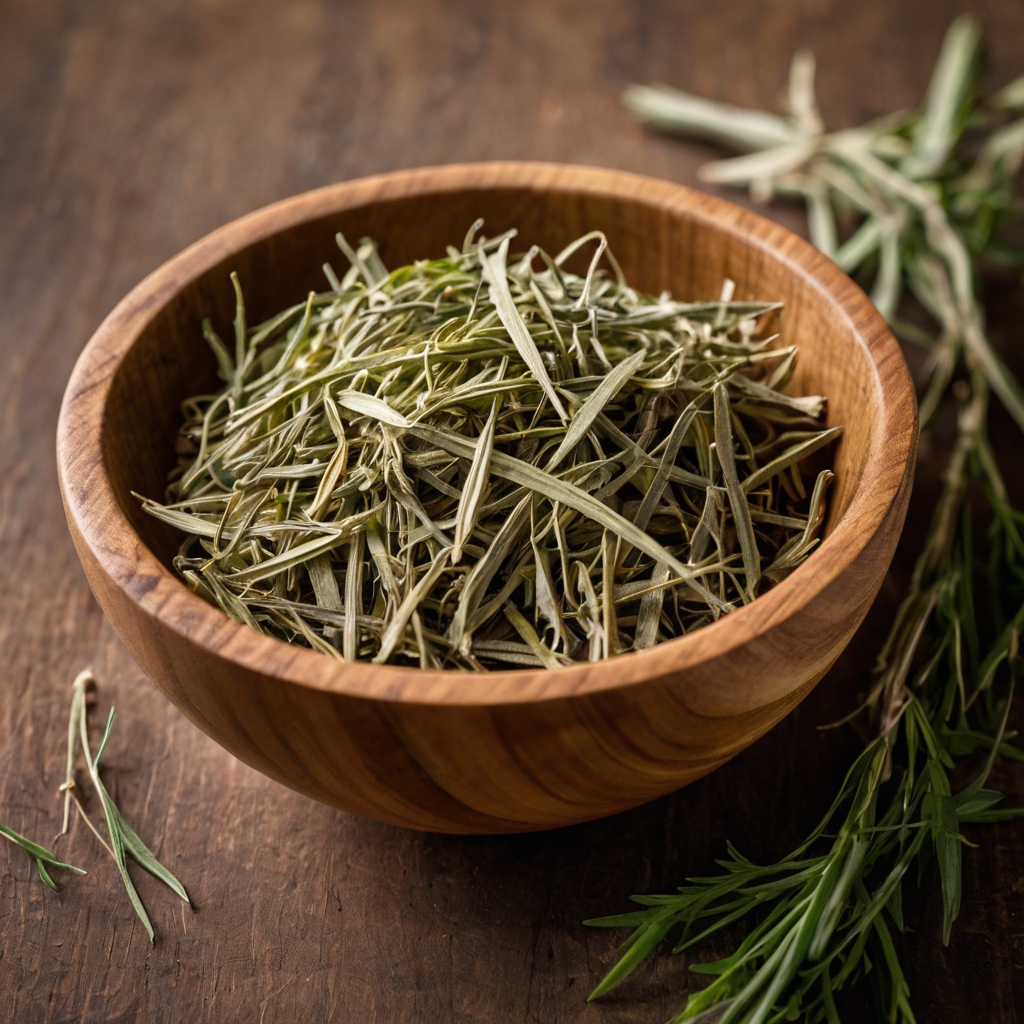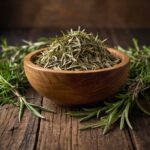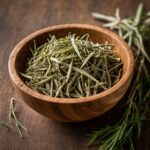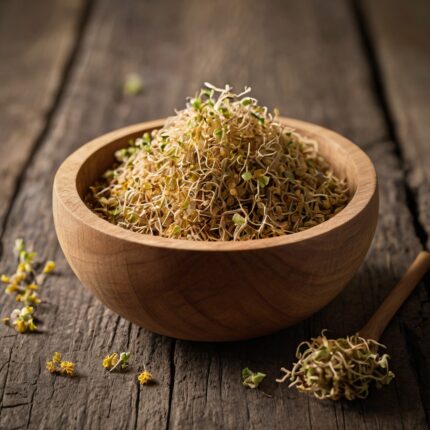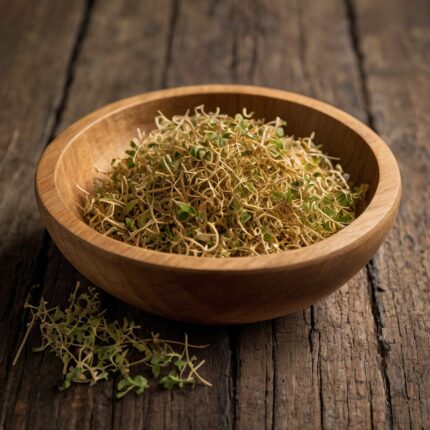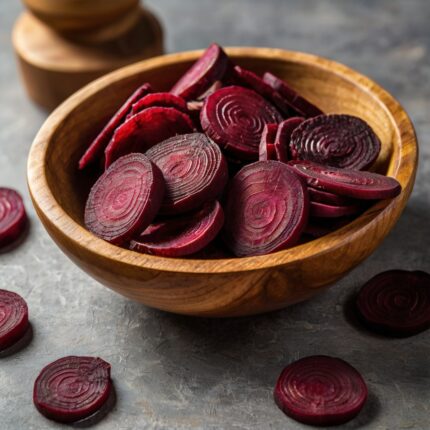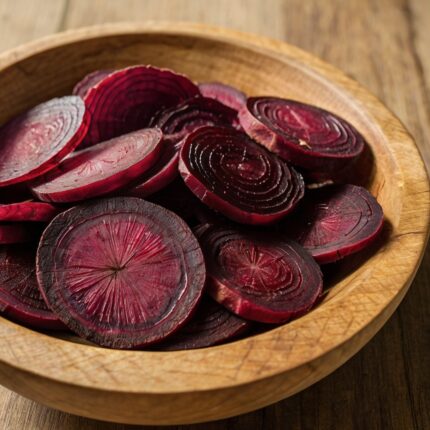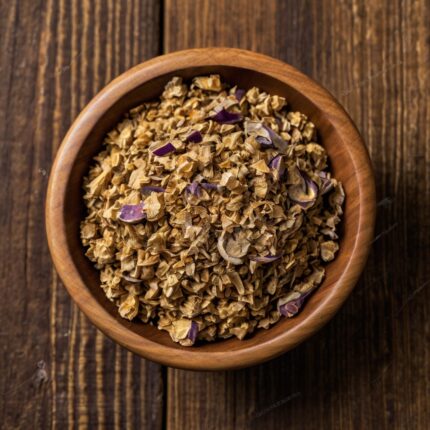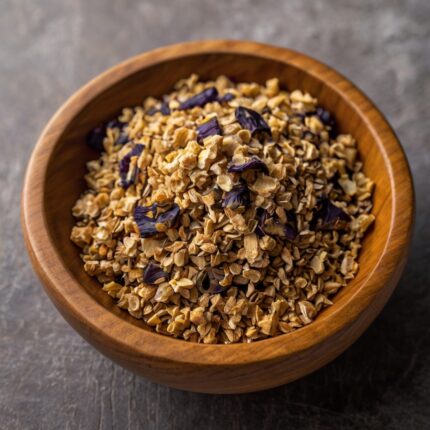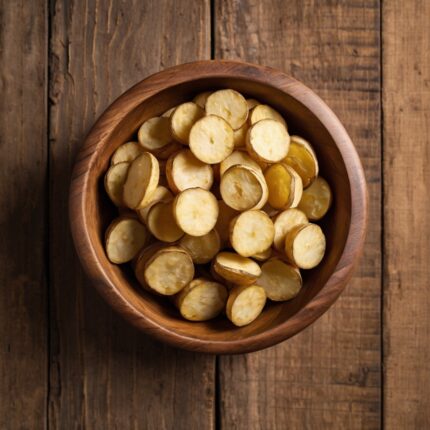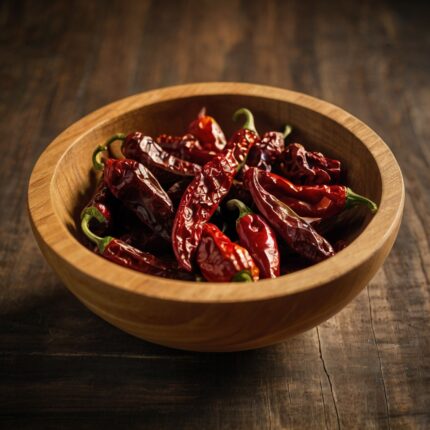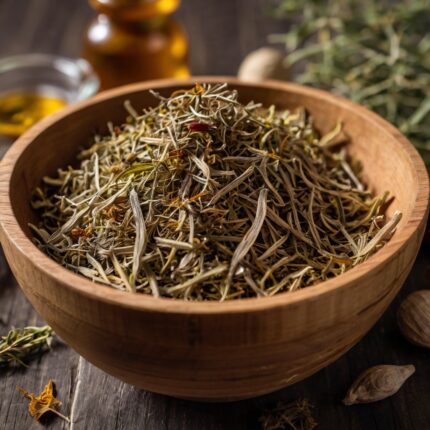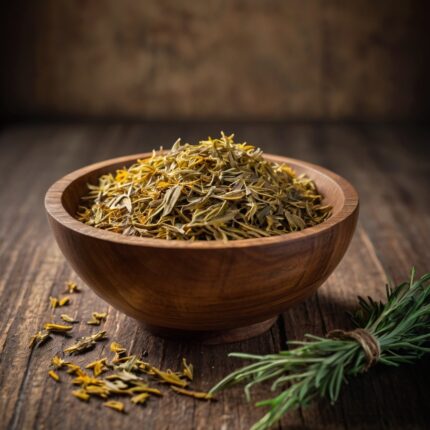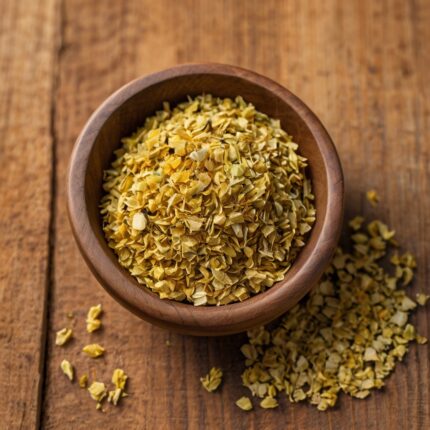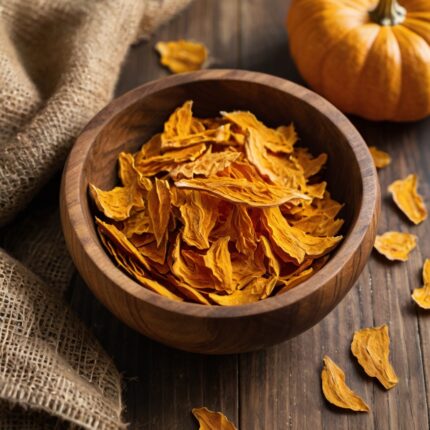Dried tarragon (Artemisia dracunculus) is the dried form of the tarragon plant, a herb native to Eurasia. Tarragon is known for its distinctive flavor, which is slightly bitter and sweet with a hint of anise or licorice. It is commonly used in cooking to enhance the taste of a wide variety of dishes. While fresh tarragon is more commonly used in cooking, dried tarragon is a convenient, longer-lasting option with a more concentrated flavor that can improve the quality of dishes.
Uses of dried tarragon:
- Culinary uses:
- Seasoning for meats:
Dried tarragon is often used in French cuisine and pairs particularly well with poultry, fish, and meats such as chicken, turkey, and lamb. It is frequently included in spice blends and sauces, such as Béarnaise sauce, which is typically served with steak or grilled fish. - Salads and garnishes:
Dried tarragon can be added to vinaigrettes, salad garnishes, or pickles to impart a subtle anise-like flavor. It also enhances the taste of mustard and vinegar. - Vegetables:
It can be used to flavor grilled vegetables, especially those with mild flavors such as potatoes, carrots, and zucchini. Tarragon enhances the overall taste of the dish with its subtle touch. - Soups and stews:
Dried tarragon can be added to soups, stews, or broths to create a unique herbaceous flavor. It is particularly popular in chicken soups and creamy vegetable soups. - Egg dishes:
Tarragon pairs well with eggs. It can be sprinkled on boiled eggs, used in omelets, or added to quiches for flavoring. - Fish and shrimp:
Tarragon is a classic pairing with fish and shrimp, especially in dishes like fish chowder, shrimp scampi, or grilled salmon. - Breads and baked goods:
You can use dried tarragon in breads, biscuits, or savory crackers to add a herbal touch.
- Medicinal and health uses:
- Digestive health:
Tarragon has traditionally been used as a remedy for digestive issues such as stomach upset, bloating, and gas. It may stimulate appetite and aid in healthy digestion. - Anti-inflammatory and antioxidant:
Due to its antioxidant and anti-inflammatory properties, tarragon can be used as a natural remedy to reduce inflammation, such as joint pain or muscle fatigue. - Menstrual symptom relief:
Tarragon is sometimes used in herbal medicine to help alleviate menstrual cramps and regulate menstrual cycles. It is believed to have mild estrogenic properties. - Sleep aid:
In traditional medicine, tarragon is commonly believed to promote relaxation and alleviate insomnia. Tarragon tea is sometimes consumed before bed to help induce sleep.
- Aromatherapy and essential oils:
- Essential oil:
Tarragon essential oil is extracted from its leaves and used in aromatherapy for its calming and soothing properties. It can be used in a diffuser to help alleviate stress, anxiety, and mild headaches. - Topical applications:
This essential oil is also used in skincare products due to its antimicrobial and anti-inflammatory properties. However, it should always be diluted before topical application.
- Natural preservatives:
- In pickles:
Dried tarragon is often included in spice blends for pickling vegetables, especially pickled cucumbers and gherkins. Its antimicrobial properties help extend the shelf life of pickled products. - Herbal infusions:
Tarragon can be infused in oil or vinegar to create a flavored herbal oil or vinegar, which can be used for garnishes, pickles, or as a seasoning.
- Animal feed:
- Livestock supplements:
Dried tarragon can be used as a herbal supplement in animal feed, particularly for herbivores like rabbits or guinea pigs. This plant may support digestion and offer natural antimicrobial benefits for animals.
| nutrient | s amountper | 100 grams of dried tarragon
| calorie | s295 kilocalories |
| portoin | 19g |
| fat | 7g |
| saturated fat | 0.8g |
| carbohydrates | 67g |
| dietary fiber | 15–20g |
| sugar | 1–2g |
| vitamin A | 3000–4000 international units (important for vision health and immune system function) |
| vitamin C | 50 milligrams (supports the immune system skin health and iron absorption) |
| vitamin K | 150–200 micrograms (important for blood clotting and bone health) |
| folate | 100 micrograms (aids in cell growth and DNA synthesis) |
| vitamin B6 | 1.5 milligrams (supports brain function and metabolism) |
| calcium | 150–200 milligrams (supports bonehealth | )
| iron | 30 milligrams (important for oxygen transport in th | e blood)
| magnesium | 120 milligrams (important for muscle and nerve function) |
| potassium | 700–800 milligrams (helps regulate b | lood pressure and muscle function)
| zinc | 1–2 milligrams (supports | immune system function and enzyme activity)

